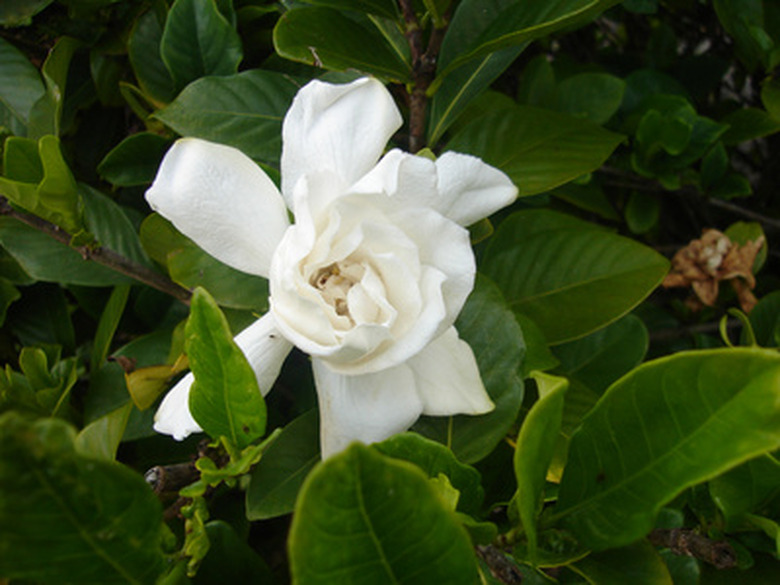How To Feed Gardenias
Things Needed
- Complete water-soluble fertilizer (15-5-15 or 15-5-10)
- Blood meal or fish emulsion
- Hand rake
Gardenias add a tropical touch to any sunny environment with their heady scents and lush, green foliage. Because gardenias are sometimes finicky in their blooming habits, they can be a challenge for the gardener who desires prolific blooming. Keep your gardenias healthy and happy with proper care. Feed gardenias regularly throughout the growing season, but do not feed them as autumn approaches. Late-season feeding may cause renewed growth that can be damaged by cold temperatures.
Step 1
Fertilize the gardenia for the first time in early spring when the shrub is just breaking dormancy. Mix complete fertilizer with water according to package recommendations for the size of your gardenia shrub. Apply the fertilizer to the soil around the shrub, taking care not to splash fertilizer onto the plant foliage as you apply the fertilizer.
- Gardenias add a tropical touch to any sunny environment with their heady scents and lush, green foliage.
- Because gardenias are sometimes finicky in their blooming habits, they can be a challenge for the gardener who desires prolific blooming.
Step 2
Sprinkle ¼-cup to ½-cup blood meal or fish emulsion around the base of the gardenia shrub every two to four weeks. Rake the blood meal or fish emulsion into the soil with the hand rake and water the gardenia shrub to help the fertilizer soak into the soil and down to the roots.
Step 3
Fertilize the gardenia for the second time during the middle of the growing season with the water-soluble fertilizer, following the same technique you used at the beginning of the growing season.
Step 4
Continue to add the blood meal or the fish emulsion around the base of the gardenia shrub every two to four weeks throughout the entire growing season.
Warning
Do not fertilize the gardenia past August because late-season fertilization will confuse the plant and encourage continued growth when it should be preparing for dormancy.
